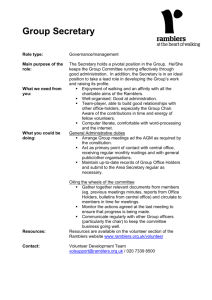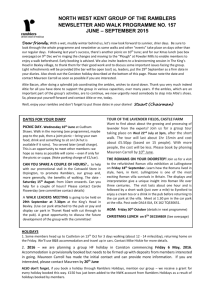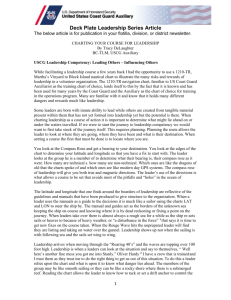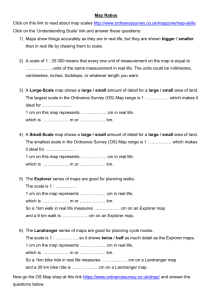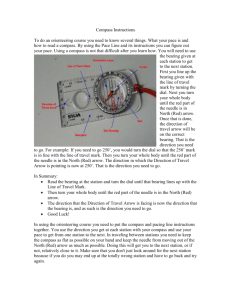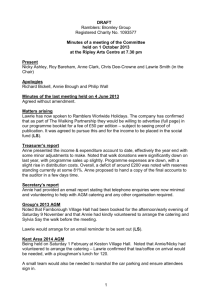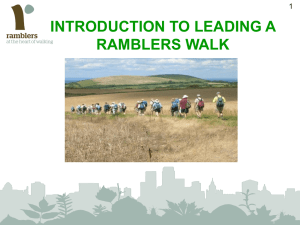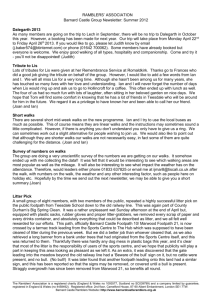Document
advertisement
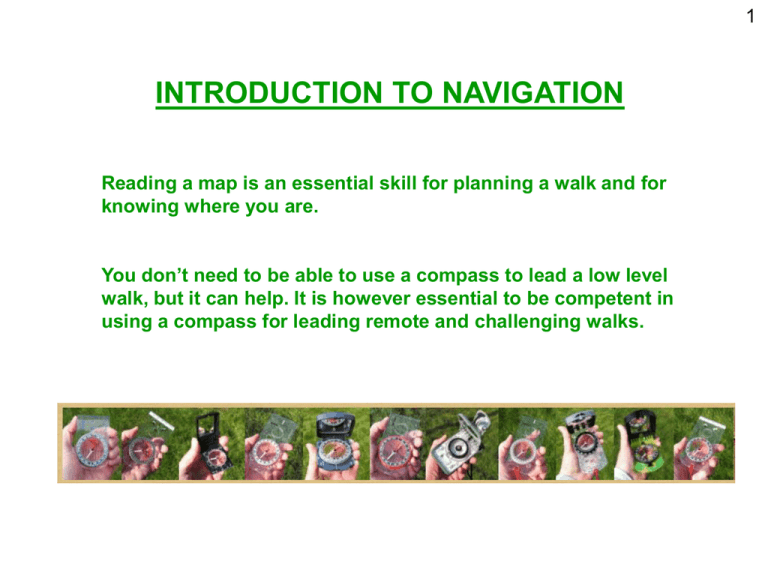
1 INTRODUCTION TO NAVIGATION Reading a map is an essential skill for planning a walk and for knowing where you are. You don’t need to be able to use a compass to lead a low level walk, but it can help. It is however essential to be competent in using a compass for leading remote and challenging walks. 2 MAPPING BASICS 3 MAP TYPES 1:50000 Landranger 1:25000 Explorer Best to check date of issue as landmarks can change over time. Other maps are available, such as Harvey's. 4 5 6 AUDIENCE PARTICIPATION! WHERE AM I? Give everyone 4 or 5 Grid References from the map and ask them to identify what they find there 7 MEASURING SCALE 1:25 000 OS Explorer 1:50 000 OS Landranger It might help you to remember that the larger the number in the scale, the smaller the scale of the map will be. 8 AUDIENCE PARTICIPATION! MAP SYMBOLS Split into groups and identify the symbols 9 CONTOURS How high is each hill? Contours closer together at top Contours closer together at bottom AUDIENCE PARTICIPATION! 12 13 MAP FEATURES PARTS OF A COMPASS 14 15 ALIGNING THE MAP WITH THE REAL WORLD 16 (bridge) (building) 17 Read the bearing off here 18 To follow the bearing: 19 MEASURING DISTANCE Grid squares String method Straight edge Map measurer 20 AUDIENCE PARTICIPATION! FIND YOUR WAY Give everyone 3 or 4 end points and ask them to identify what they are, the distance from each start to each end point and the bearing between them EXAMPLE START POINT GR X WHAT IS FOUND THERE? END POINT GR Y WHAT IS FOUND THERE? BEARING FROM X TO Y AND DISTANCE 438005 High House 405013 Youth Hostel at High Cross Castle 285 degrees 3.38 km 21 TIMING YOUR WALK When looking at timings for your walk consider: • walking speed (vary with terrain, stiles, party etc) Kph 3 3.5 4 4.5 5 mins per km 20 17 15 13.3 12 • Climbing hills – Naismith’s rule 30 mins extra per 300m ascended (1 min per 10m contour line) • Stops, including comfort breaks, lunch, etc… • Contingency 22 FURTHER GUIDANCE AND SUPPORT More advice and guidance can be found at the walk leaders pages of the Ramblers website: www.ramblers.org.uk/Volunteer/AreaGroup/Resources/Led+Walks.htm or email ledwalks@ramblers.org.uk Thanks to all Ramblers groups whose websites were the source of some of the pictures.
